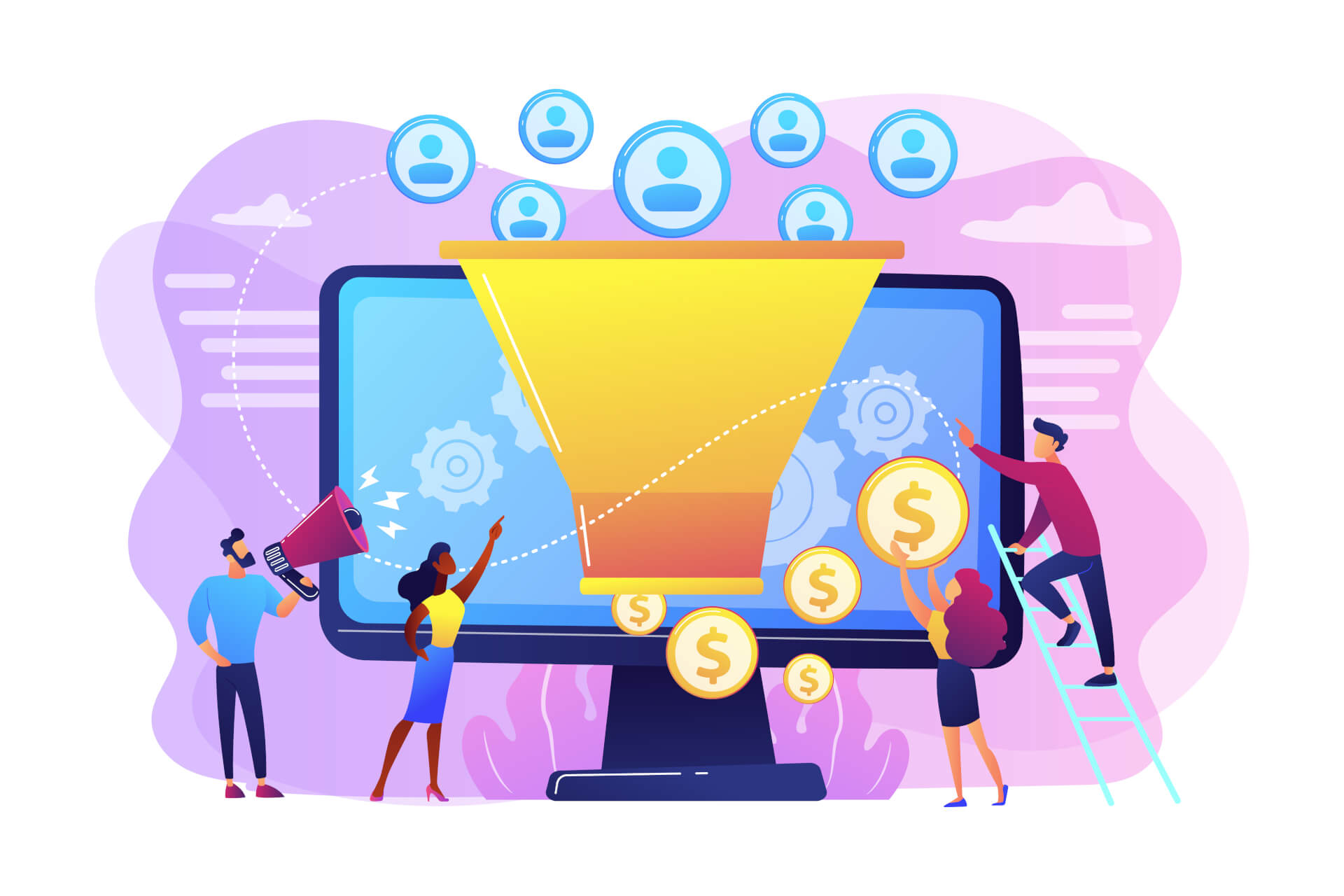One of the most effective tools for gauging customer satisfaction and loyalty is the Net Promoter Score (NPS). This article delves into the role of NPS in customer acquisition, exploring its origins, methodology, and impact across various industries.

Table of Contents
Understanding NPS
Origins of NPS
The Net Promoter Score was introduced by Fred Reichheld in 2003 through a Harvard Business Review article titled "The One Number You Need to Grow."
Reichheld aimed to create a simple yet powerful metric that could predict customer loyalty and correlate with business growth.
How NPS is Calculated
NPS is calculated based on responses to a single question:
"On a scale of 0 to 10, how likely are you to recommend our product/service to a friend or colleague?"
Respondents are classified into three categories:
- Promoters (9-10): Loyal enthusiasts who will keep buying and refer others.
- Passives (7-8): Satisfied but unenthusiastic customers vulnerable to competitive offerings.
- Detractors (0-6): Unhappy customers who can damage your brand through negative word-of-mouth.
The NPS is obtained by subtracting the percentage of Detractors from the percentage of Promoters.
Benefits of Using NPS
NPS offers several advantages:
- Simplicity: Easy to understand and implement.
- Predictive Power: Strongly correlates with customer loyalty and future business growth.
- Actionable Insights: Provides clear indicators of customer sentiment and areas for improvement.
Measuring Customer Satisfaction with NPS
NPS serves as a straightforward measure of customer satisfaction. High NPS scores indicate strong customer loyalty and satisfaction, while low scores highlight areas needing improvement.
Companies can use NPS to track changes in customer satisfaction over time and respond to feedback effectively.
NPS in Different Industries

- E-commerce
In e-commerce, NPS helps businesses understand customer preferences and pain points, leading to improved user experiences and increased sales. For example, online retailers can use NPS feedback to optimize their website design, streamline checkout processes, and enhance product offerings. - Healthcare
Healthcare providers use NPS to gauge patient satisfaction and identify areas for improvement in care delivery. High NPS scores are often associated with better patient outcomes and increased trust in healthcare services. - Hospitality
In the hospitality industry, NPS is crucial for assessing guest experiences. Hotels and resorts can use NPS data to improve amenities, customer service, and overall guest satisfaction, driving repeat visits and positive reviews. - Financial Services
Banks and financial institutions use NPS to measure customer loyalty and satisfaction with their products and services. NPS feedback helps these organizations identify areas for innovation and improvement, ensuring a competitive edge. - Technology
Tech companies leverage NPS to monitor customer experiences with their software and hardware products. High NPS scores can indicate successful product adoption and customer satisfaction, while low scores may highlight usability issues. - Telecommunications
Telecom companies use NPS to assess customer satisfaction with their service quality, pricing, and customer support. By addressing issues raised in NPS feedback, these companies can reduce churn and enhance customer loyalty.
NPS and Customer Acquisition
The relationship between NPS and customer acquisition is multifaceted, involving various strategies and methodologies to convert customer feedback into actionable insights that drive growth.
This section explores how NPS can be utilized to enhance customer acquisition efforts.
How NPS Drives Customer Acquisition
NPS can significantly influence customer acquisition by providing insights into customer satisfaction and loyalty.
High NPS scores often correlate with strong word-of-mouth referrals and positive reviews, which are crucial for attracting new customers. By identifying Promoters, businesses can leverage these satisfied customers to act as advocates for their brand, thus driving new customer acquisition through referrals.

Reading recommendation: In our blog article “Using NPS for Customer Acquisition: A Shortlist with 10 Steps” we show how easily you can optimize customer acquisition with NPS.
NPS and Referral Programs
Referral programs can be optimized using NPS data. Companies can target Promoters with referral incentives, encouraging them to recommend the brand to friends and family.
This strategy not only helps in acquiring new customers but also reinforces the loyalty of existing ones.
Tailoring Marketing Campaigns with NPS
Marketing campaigns can be tailored based on NPS feedback. For instance, Promoters can be targeted with loyalty rewards and advocacy campaigns, while Detractors can receive targeted communications aimed at addressing their concerns and improving their perception of the brand.
NPS and Customer Retention
While NPS is a powerful tool for customer acquisition, it also plays a crucial role in customer retention. Satisfied customers are more likely to stay with a brand, reducing churn and contributing to a stable customer base. By continuously monitoring and acting on NPS feedback, companies can ensure they meet customer expectations and maintain high levels of satisfaction.
 Reading recommendation: You can find more information about NPS and customer loyalty in our blog article "The Role of NPS in Your Customer Retention Strategy"
Reading recommendation: You can find more information about NPS and customer loyalty in our blog article "The Role of NPS in Your Customer Retention Strategy"
NPS in Sales Strategies
Sales teams can use NPS data to identify potential upsell and cross-sell opportunities.
By understanding which customers are Promoters, sales teams can tailor their pitches to these satisfied customers, who are more likely to purchase additional products or services.
Personalized Sales Approaches
Personalization in sales approaches can be significantly enhanced using NPS. For instance, sales teams can reach out to Promoters with personalized offers and recommendations, increasing the likelihood of successful sales.
Mapping Customer Journeys with NPS
Mapping customer journeys using NPS helps identify critical touchpoints that impact customer satisfaction. By addressing issues at these touchpoints, companies can improve overall customer experience.
 Recommended reading: In our blog article "How to make an amazing first impression on every customer" we talk about how you should optimize your offer to meet the needs of your customers.
Recommended reading: In our blog article "How to make an amazing first impression on every customer" we talk about how you should optimize your offer to meet the needs of your customers.
NPS in Marketing Strategies
Using NPS Data in Marketing Campaigns
NPS data can be a valuable asset in marketing campaigns. Companies can segment their customer base based on NPS scores and tailor marketing messages to different groups. For instance, targeted campaigns can be designed to win back Detractors or reward Promoters.
 Reading recommendation: How you can use NPS results to improve your marketing strategy and promote growth is explained in our complementary blog article "How to Utilize NPS Results in Your Marketing Strategy"
Reading recommendation: How you can use NPS results to improve your marketing strategy and promote growth is explained in our complementary blog article "How to Utilize NPS Results in Your Marketing Strategy"
Personalization Based on NPS Feedback
Personalization is key to effective marketing. By using NPS feedback, companies can create personalized marketing messages and offers that resonate with individual customers, enhancing engagement and conversion rates.
Social Proof and Testimonials from Promoters
Promoters can be powerful advocates for a brand. Companies can leverage positive testimonials and reviews from Promoters in their marketing materials to build credibility and attract new customers.

Reading recommendation: If you would like to learn more about successful strategies for implementing NPS, we recommend our blog article "Implement simple strategies with the Net Promoter Score to generate more sales"
NPS and Customer Segmentation
Customer segmentation based on NPS scores allows companies to tailor their strategies to different customer groups. For example, specific retention strategies can be developed for Detractors, while Promoters can be engaged through loyalty programs and advocacy initiatives.
 Reading recommendation: In our blog post "NPS and Customer Segmentation: Understanding the Dynamics" we dive into the intricacies of NPS and customer segmentation and shed light on their importance and impact.
Reading recommendation: In our blog post "NPS and Customer Segmentation: Understanding the Dynamics" we dive into the intricacies of NPS and customer segmentation and shed light on their importance and impact.
NPS and Product Development
NPS provides valuable insights that can drive product development. By analyzing feedback from Detractors and Passives, companies can identify areas for improvement and innovate their products to better meet customer needs.
Using NPS Feedback in Product Roadmaps
Incorporating NPS feedback into product roadmaps ensures that customer needs and preferences are prioritized. This customer-centric approach can lead to the development of products that are more likely to succeed in the market.
Enhancing NPS for Better Customer Acquisition
Gathering Actionable Feedback
To enhance NPS, companies need to gather actionable feedback. This involves asking follow-up questions to understand the reasons behind the scores and identify specific areas for improvement.
Implementing Changes Based on NPS Insights
Acting on NPS feedback is crucial for improvement.
Companies should prioritize the issues identified through NPS and implement changes to address them, demonstrating to customers that their feedback is valued.
Training Staff to Improve NPS
Employee training is essential for improving NPS. Customer-facing staff should be trained to deliver exceptional service, handle complaints effectively, and create positive customer experiences.
Continuous Monitoring and Improvement
NPS should be monitored continuously to track progress and identify new opportunities for improvement. Regularly updating and refining strategies based on NPS insights can lead to sustained customer satisfaction and loyalty.
Conclusion
In summary, NPS is a powerful tool for understanding customer satisfaction and loyalty. By leveraging NPS effectively, companies can enhance customer acquisition, improve customer experiences, and drive business growth.
It is essential for businesses to continuously monitor and act on NPS feedback, integrate it into their strategic planning, and foster a customer-centric culture.
